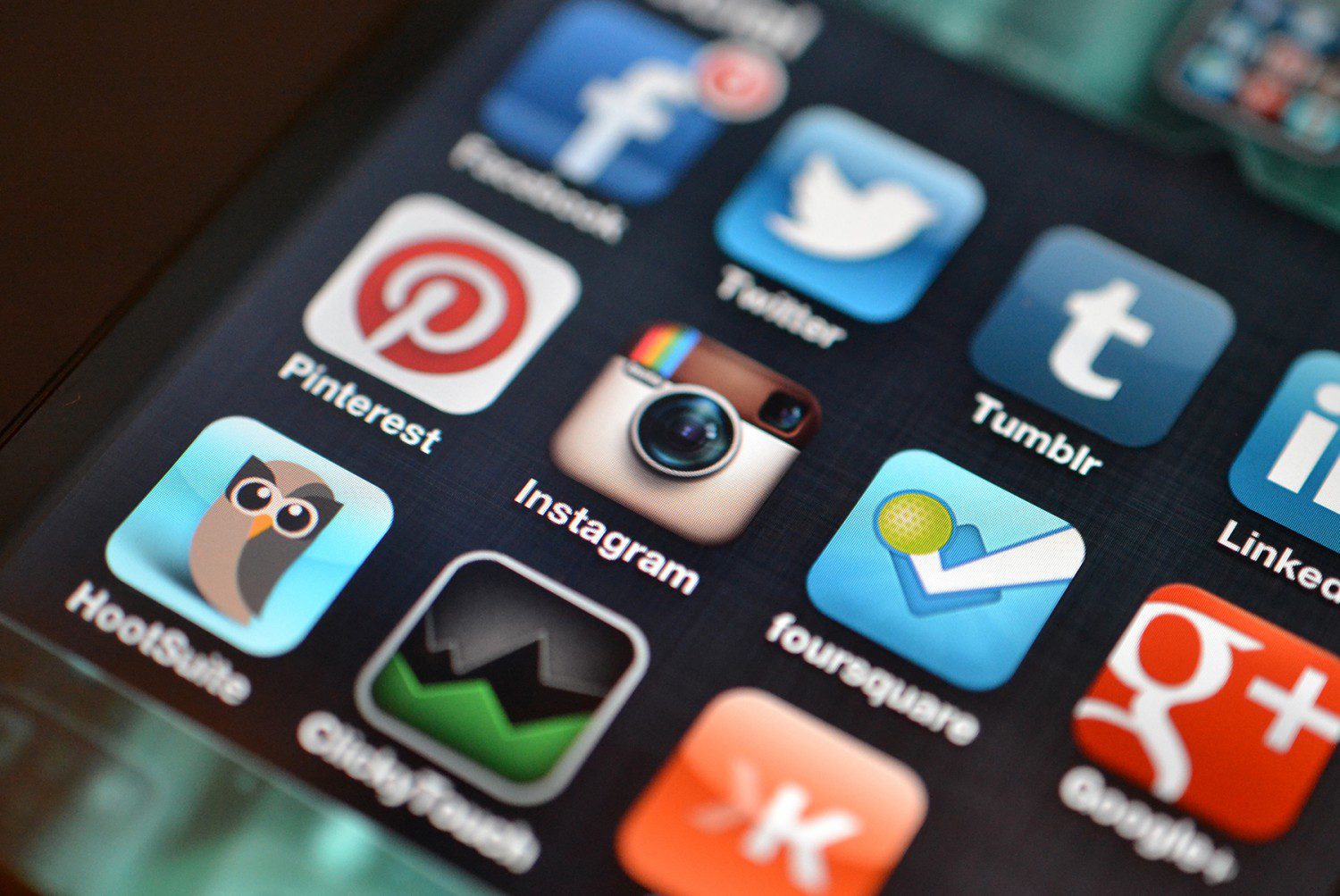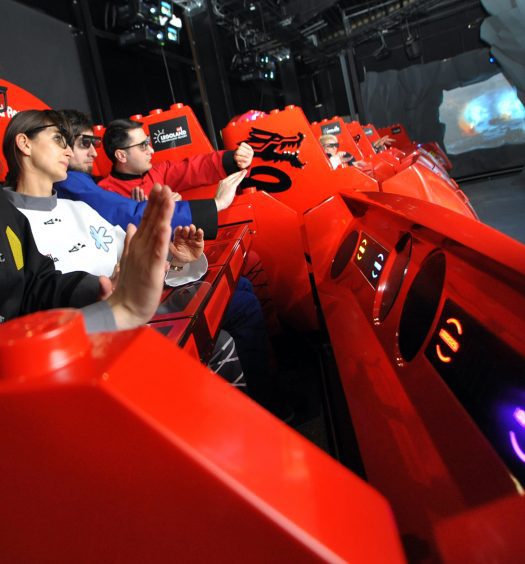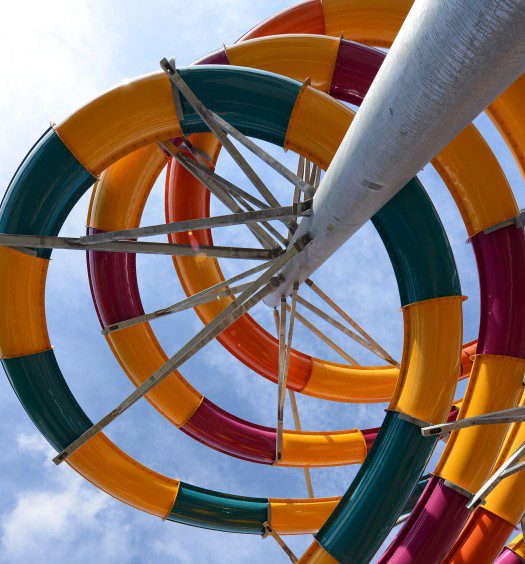The online world has dramatically changed the way we live our lives and how companies target audiences and new business. Beth Whittaker assesses the importance of social media in the role of a modern-day amusement park’s marketing strategy.
Back in 2001 it was all about Friends Reunited. Create a personal account, log in and have a nosey at how successful your old school pals now were, having entered into adult life.
A few years later in 2003, Myspace came on the scene and it was the place to be if you were an up-and-coming band desperately trying to get noticed. Then came Facebook in 2004, quickly followed by Twitter two years later – both of which have taken the world by storm.
Since these early days of social media, it is fair to say that almost every platform for interacting in an online ‘social’ capacity has been launched.
Social media has become so integrated into every day life that it is difficult to remember a time when we weren’t following celebrities and their ‘insightful’ tweets; or putting an Instagram filter on that much-needed glass of wine at the end of the week; or associating a #hashtag with everything and anything in sight, all while watching a cat play the piano on YouTube.
Then of course, there’s your Pinterest board – full of website clippings to come back to and peruse at a later date should you find a spare five minutes before checking your email or Linkedin account for career networking updates!
Social media platforms have massively changed the way in which we live our lives, the way we communicate, source information and keep up to date with our social interests.
The huge surge in social media has, in turn, changed the way businesses promote themselves and interact with their clientele – opening up a world of new marketing possibilities and interaction with their existing and potential customers. To underestimate social media’s importance in the modern world would be naive.
Today, it is just as likely that a business will have Facebook and twitter accounts as it will a website and amusement and theme parks – with many of their core target group having grown up with social media around them their entire lives – is no exception.
The leading parks around the world draw millions of Facebook likes and Twitter followers between them. Take Six Flags in the US, at the time of print its Facebook page had just under 5.5 million likes, while its Twitter page attracts just under 80,000 followers.
Disneyland Paris has over 3.1 million Facebook likes and over 75,000 Twitter followers, while Europa-Park in Germany has over 637,000 Facebook likes and just under 8,000 Twitter followers.
In the UK, Alton Towers, part of the Merlin Entertainments Group, has built up 1.4 million likes on Facebook and over 125,000 followers on Twitter, while Thorpe Park has over three quarters of a million Facebook likes and over 74,000 Twitter followers.
Merlin Entertainments’ marketing director Emma Woods and Alton Towers’ Digital and CRM marketing manager Neil Aspinall, spoke with InterPark about the group’s huge social media following.
“These communities are immense vehicles for brand promotion, market research and customer service. Our aim is to engage our potential visitors at the point of choosing their day out; while they are booking with us which is more and more online; during the period between booking and their visit – to excite and inform; and then while they are actually with us – through the introduction of new alert systems which help with queuing/shows and events and so on, and most importantly ensure they maximise their time with us; and finally post visit, to get their feedback and opinion, remind them of the experience they had and to highlight future activity at all our attractions which may appeal to them.
“The mobile nature of social media, along with saturation of smartphone users, means our guests are connected all the time and Merlin Entertainments has followed and harnessed this development over the past five years, particularly with regard to our theme parks.”
With social media available at every stage of each guest’s journey, Merlin Entertainments (along with other park operators) finds itself in an age where every guest has the potential of becoming a visible brand ambassador, an incredibly positive thing for the industry as a whole, as it encourages recommendation, loyalty and ultimately the potential for more visits and more revenue.
“Within Merlin we place great importance on the concept of social proof – a modern seal of approval,” continued Woods and Aspinall, “because consumers place a great deal of faith in the recommendations of peers and friends, which includes building profiles and maximising the potential of review sites such as TripAdvisor.”
Social is now the media channel of choice for a whole generation and most marketing campaigns within the amusement industry have a media element in order to reach this demographic. Take Thorpe Park as an example; some campaigns such as #frightnights are led by social media as Woods explained.
“Social media gives us the opportunity to build on-going relationships with our guests and to celebrate and reward customers. Social media allows us to take exciting entertainment brands and be incredibly visually imaginative – a picture speaks a thousand words and social media is made for this. It also, of course, offers the potential for immediate flexibility and change to capitalise on opportunities or changing trends as they arise – in the moment; or to communicate minute-by-minute fun stuff at our attractions which might appeal to others.”
Social media optimisation company We Do Digital (WDD) has been providing website design and app development services to the amusement industry for almost 20 years. With clients ranging from large theme parks to local fun centres, it has a solid grasp on what attractions need when it comes to digital marketing.
For Jeff Prystajko of WDD, there has been a gradual but very encompassing adoption of social media in the amusement industry. “Five years ago we were just seeing a few businesses add Facebook ‘like’ buttons to their pages,” he says. “Now, every park, zoo, FEC and museum is pretty much guaranteed to have a variety of social network icons and links on their website – if not more.”
According to Prystajko, for many businesses, social media has allowed a closer relationship between fans and the brand. Social media by its very nature facilitates two-way communication, allowing for a level of interaction that simply did not exist previously.
“Now, when a business makes an announcement or asks the community a question, it is able to get clear and instant feedback,” he says. “One of the key attributes of social media is the ability for people to share content they like with friends and others in their community. While many posts are quickly forgettable, the ones that create an emotional connection with the reader or offer a novel experience, have a greater opportunity to go viral – one customer shares with all of their friends, who then share with their friends and so on. That’s a phenomenal amount of brand exposure and a great way to convert the exposure into new customers.”
Blackpool Pleasure Beach (BPB), in the north of England, has over a quarter of a million Facebook likes and just over 21,000 Twitter followers. For the last two seasons the park has had a dedicated social media assistant to generate great quality shareable content in order to drive revenue and increase brand awareness and engagement with its fans and potential customers.
This dedication to the channel and marketing budget spend on both wages and paid advertising by the park reiterates social media’s importance as a marketing channel to the amusement industry.
For BPB, social media allows the park to react quickly with last minute marketing campaigns and easily run marketing campaigns such as competitions and polls, that before the age of social media would have been much more difficult.
James Cox, senior marketing manager for BPB, told InterPark: “We use social media to target new customers in the form of paid, unpublished posts and Facebook offers. We also use our database to generate custom audiences and based on these, create similar audiences utilising social media’s large amount of data to pinpoint relevant target demographics to communicate to.
“We also encourage all our guests to follow us on social media as part of our sales process in automated emails, allowing us to communicate with them in future to keep them coming back and gain extra value over their lifetime.”
Technology, marketing and theme parks go hand in hand. Advances in technology give the ability to talk to large numbers of guests in a very personal manner, whether through email, SMS or social media. New technologies, and specifically the advancements in mobile, has provided valuable additional marketing channels and revenue streams – combining this with valuable data enables parks to market their businesses much more effectively to the general public and in a much more targeted manner.
For Ryan Orrell of Webmonster, which specialises in website design, search engine marketing and social media promotion, technology has massively changed the way the amusement industry markets itself to the general public, as he explaining to InterPark.
“It’s simple: the amusement groups that are smart track everything they can about their customer – their habits, what types of products they are likely to buy, offers that entice them and their families,” Orrell said. “You’ll see mobile marketing continue to grow where parks send offers straight to customers’ mobile phones. Over 90 per cent of text messages are read within 20-25 minutes and you’ll see more parks use interactive apps to communicate with clients in parks, as well as pushing special and time sensitive offers. There’s a great deal of interactive technology that continues to advance season after season.”
Technology has also changed the speed of marketing in the amusement industry, as it is an industry that needs to be marketing in real-time, especially during the core season, as Prystajko explained.
“While it’s still essential to have a calendar of one’s long-term strategies technology has forced marketers to be much more responsive and flexible to what’s current. Being able to take advantage of immediate opportunities – perhaps even as small as offering a promotion to counter an unexpected weather event – can have a very positive effect on the bottom line.”
So has this huge surge in social media marketing and advancements in technology seen other marketing strategies fall by the wayside in the amusement sector? As far as the Merlin executives are concerned, absolutely not, with television and other above the line media continuing to have a very important role in creating mass awareness and in really showing off the experience. As do promotions and partnerships with high profile targeted third parties, whether that is in the media or with fmcg companies – which are invaluable in delivering new customers.
“Social media marketing has opened up new ways of doing things,” say Woods and Aspinall, “such as continuing to communicate with guests after they have visited and to understand and target other related experiences to individuals as part of our programme. It also allows us to be more active and timely than ever before in creating memorable experiences which reflect our different brand positioning, whether it is to families with young children coming to Legoland, Alton Towers or Sea Life, or young adults coming to the Dungeons or Thorpe Park.”
BPB’s Cox adds to this, commenting: “No marketing areas have necessarily been dropped at BPB, but social media in some cases has been chosen as the main driver, with other channels simply reinforcing the message, such as our first three Project 2015 campaign teasers.
“Social media effectiveness is hard to categorise with most revenue associated to social media often going under the radar depending on whether the customer performs a direct click through or not. There are certainly more effective channels, although social media ROI is one of the highest, meaning it is well worth the time and effort we dedicate to it.”
For Ryan Orrell, as social media has grown in importance, there has been a lot more budget shifting in marketing than anything else and it really comes down to the budget of a park or FEC because advertising is all about frequency.
“It’s ridiculous to expect a hefty return when you’re only running 10 commercials a week on radio or television and running the right frequency can get downright expensive using those channels,” he told InterPark. “If you get a firm that really knows what they’re doing, they’ll evaluate your overall budget and make social media advertising an integral part of your strategy.
“In many instances, you can reach the same amount of consumers through social media as you would on radio and/or TV and at a fraction of the cost. The key with social media is targeting the right consumer. Technology has evolved to where I can laser in on my target market to the exact age, sex, township, city, state and country in minutes.
“Social media can transform the way the amusement industry does business but there’s more to it than throwing up a few pictures and ad copy,” Orrell continues. “The world has changed and social media continues to evolve and is here to stay. Now, platforms and different social media outlets will come and go just like Myspace was taken over by Facebook in popularity a few years ago.
“To date, Facebook is King where 71 online consumers out of every 100 have a Facebook account. I see more and more businesses in the amusement industry turn to social media because it’s far more affordable than traditional forms of media and can pack a powerful punch. The amusement industry can instantly communicate with potential customers and this is what makes it so attractive.”
There is no doubt that social media has had a positive influence on the amusement park industry. Given the whole premise of social media is to be an outlet for personal opinion and sharing of exciting experiences and content such as personal images and videos, social media as a whole concept ties in perfectly with the industry.
“It is the perfect foundation for customers to share their experiences and engage with the amusement park before, during and after their visit,” comments Cox, “something most other digital channels cannot offer or compete with.
“We also try to tap into the community side of social media by fully reviewing every comment and message, trying to provide an apt response to build up a relationship with the customer or potential customer, and also make use of all available social media tools to gauge opinion. This can help us respond better due to having more complete information.”
For Prystajko, this ‘community’ element of social media can have problems associated with it, as the first mistake businesses make is not actually understanding the meaning of the word community, as he explained.
“It’s about people, not your brand. If you’re advertising birthday parties a post such as ‘our birthday parties are an incredible experience – click here to learn more’ is guaranteed to get less traction than a message crafted around someone’s experience – complete with names and faces. The ideal social media manager is someone who not only understands the audience but truly wants to connect with them.”
Moving forward then, how do our experts see the amusement industry continuing to make the most out of social media marketing opportunities? What new trends do they expect to see?
For the social media experts: “Since social is all about sharing, we want to encourage guests to post about their experiences,” said Prystajko, “either while they’re at a business or the memories of it afterwards. We’ve seen success in marketers getting people to tag their business or add a hashtag to tweets and Instagram uploads, but the next frontier lies with engaging people to capture and share videos of their visits. As the smartphone-enabled YouTube generation has proven, even something as simple as a funny 10-second clip can explode in ways that plain text or images never could.”
Orrell picks up on a point made earlier, concerning marketing budgets, when concluding, telling InterPark: “I see many parks shifting their budgets more and more to social media in the future. It’s the most cost effective way to get in front of hundreds of thousands or millions of consumers in an instant.
“Plus, you can nail down your target audience and tailor your message to them specifically through targeting and re-targeting. It packs an incredibly powerful punch you just can’t get with TV or radio from an affordability perspective. You’ll see more and more smaller parks turn to social media to stretch their budget and reach more consumers.”
From the parks’ perspective, BPB’s Cox concludes: “Social media is ever advancing and with most reputable social media sites such as Facebook and Twitter now turning their attention to monetisation, it will likely bring extra marketing possibilities to the amusement park industry. Specifically, the ability to utilise the vast amounts of data available – this can be seen by Facebook’s recent announcement of Facebook atlas.”
And for Merlin Entertainments: “Social proof is so important – the ability to deliver a great day out and therefore generate positive reviews and comments is critical. Looking ahead, there are so many exciting new developments we can take advantage of and use in unique ways – developments in iBeacons and RFID that play hand-in-hand with the sharing nature of social media, for example, will form a big part of future promotion.”















